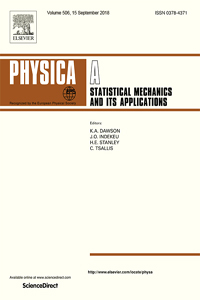
Minglei Fua, Jun Fenga, Dmytro Lande, Oleh Dmytrenk, Dmytro Mankob, Ryhor Prakapovich.
Dynamic model with super spreaders and lurker users for preferential information propagation analysis
// Physica A: Statistical Mechanics and its Applications. Volume 561, 1 January 2021. - Art. 125266. DOI: doi.org/10.1016/j.physa.2020.125266
Highlights
Abstract Publication of preferential information via online social networks has recently increased in business promotional activities. This activity involves consideration of the propagation of preferential information in online social networks as well as the effects of such propagation on shopping choices. This paper proposes the susceptible-lurker-super-normal-recovered (SEAIR) dynamics model to address the propagation process of preferential information in the Weibo network. In the proposed SEAIR model, super spreader and lurker user compartments are adopted, and entry and exit are available to and from every compartment, which more realistically reflects circumstances in Weibo. Dynamic equations of the SEAIR model are proposed based on the mean-field theory, and the basic reproductive ratio (threshold) R0 derived. Furthermore, it is proved that the information-free equilibrium state of the SEAIR model is locally and globally stable when R0 is less than one, at which point the propagation process tends to disappear; there is a unique endemic equilibrium state when R0 is greater than one. To verify the performance of the SEAIR model, a Baidu App promotion activity in Weibo is used as a real case study. Compared to the conventional susceptible-infected-recovered (SIR) model, numerical results show that the SEAIR model reduces the root mean square error (RMSE) and the mean absolute error (MAE) by 33.2% and 24.74%, respectively. The influence of the main parameters on the performance of the SEAIR model are also analyzed. Keywords Complex system, Social network, Dynamic model, Threshold, Preferential information |
